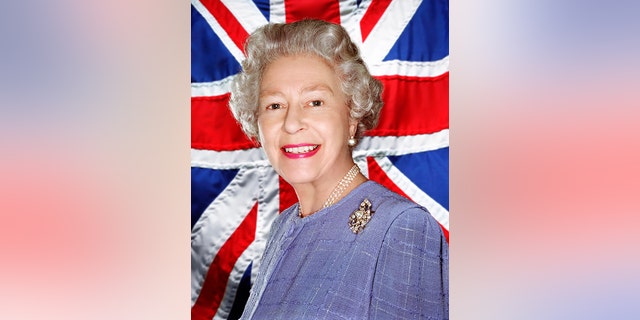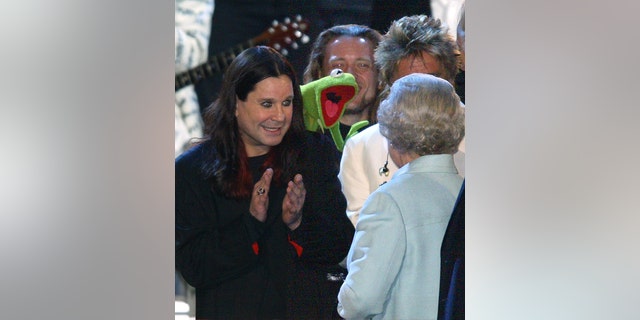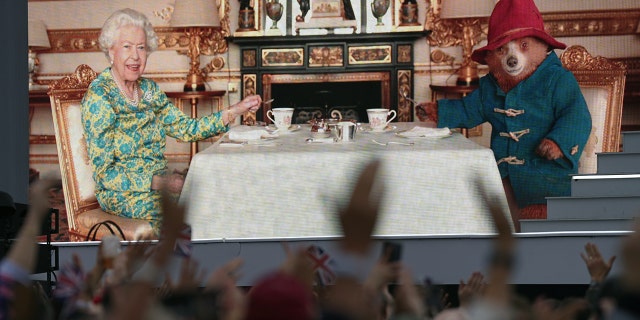NEWYou can now listen to Fox News articles!
Queen Elizabeth was ready for her close-up when a nervous photographer, known for mingling with the stars, walked into Buckingham Palace.
It was 2002 and Rankin, whose full name is John Rankin Waddell, was one of 10 photographers chosen to photograph the reigning monarch for her Golden Jubilee that year. The Scottish-born photographer and co-founder of the magazine Dazed + Confused had collaborated with some of the biggest names in Hollywood and fashion – but nothing could prepare him for Her Majesty.
“I was probably more nervous than I’ve ever been in my life,” he admitted to Fox News Digital. “I think the only other person who ever made me quite nervous was Madonna. But I was also super excited because as head of state, she has been a part of my life since I was born. If you were brought up in the U.K., she becomes like an extended member of your family.”
Photographer Rankin, who has worked with some of Hollywood and fashion’s top stars, said photographing Queen Elizabeth II was the highlight of his decades-long career.
(Matthias Nareyek/Getty Images)
“It was an absolute honor,” he continued. “I’ve always been in awe of her as a human because she had made so many sacrifices in her life. And even though I grew up with her, I didn’t know very much about her. So, it was fascinating to have a brief moment where I could see who she really was as a person. But this was also the most famous woman in the world. So there was, of course, a lot of pressure to get it right. And I wasn’t scared of taking her photo. I just wanted to make sure it perfectly represented her.”
QUEEN ELIZABETH SPORTS POST-PLATINUM JUBILEE HAIRCUT, GOES WITHOUT CANE AT WINDSOR CASTLE
Rankin, a nervous wreck, arrived at Buckingham Palace wearing a suit and carrying his equipment. With bated breath, he waited for the queen, now 96, in a room with about three palace aides. He suddenly heard a persistent tap from a seemingly never-ending corridor. There was Elizabeth, walking alongside a towering footman who was at least 6 feet, 2 inches.
“Here I was, wondering how I should greet her – I had done so much research before – but here she was just joking and laughing with her footman as they were walking toward me,” he explained. “I just thought, ‘Oh my God, she’s got this great sense of humor.’ And when she walked in, there was this wave of power that took over me. And it’s interesting because she’s not a tall person at all. But she walked in with this incredible power that takes over a room. It’s almost as if it’s washing over you, this feeling. But seeing her walk in with laughter also put me at ease. In my research, I read she had this wicked, very cheeky sense of humor. And it clearly showed.”

Rankin photographed Queen Elizabeth for her Golden Jubilee in 2002.
(HM The Queen, 2002 Ⓒ Rankin)
According to the 56-year-old, Elizabeth happily chatted with Rankin and even made several jokes during their brief conversation. But Rankin, who was anxious at the time, admitted he couldn’t remember the exact quips the queen made.
“I do remember her being funny and engaging,” he said. “I hadn’t realized how funny she would be.”
CLICK HERE TO SIGN UP FOR THE ENTERTAINMENT NEWSLETTER
The photo shoot, which took place in the ballroom, went smoothly – at first. But suddenly, a piece of Rankin’s camera fell to the ground during their session.

Queen Elizabeth is introduced to Ozzy Osbourne and Kermit the Frog on stage during “Party at the Palace” in 2002 as part of her Golden Jubilee celebrations.
(Adrian Dennis/AFP via Getty Images)
“It was a part of my camera that made the flash work,” said Rankin. “She just laughed. It broke this kind of spell that was going on. She humanized in front of me. I wanted to capture that feeling with my camera. Once I saw that laugh, I thought, ‘That’s it, I’m gonna get her smiling.’ When my assistant eventually got that piece back in, I said, ‘Ma’am, could you just smile, please? I got one where she gave this really massive smile. And in the end, I got this one smile – that was the shot.”
According to Rankin, he shot 100 frames in four minutes. But it was the three photos where the queen was smiling that he said truly captured her spirit. He sent versions of the portrait to the palace. In one version, he put the Union Jack behind her. He soon received a note stating that Elizabeth liked the stitching on that one photo, which he said was the closest thing to her saying she liked that image of herself.
The photo went on to be displayed at Windsor Castle and the National Portrait Gallery.
HOW THE YOUNG ROYALS HAVE BEEN ‘SCENE STEALERS’ AND ARE ‘MODERNIZING THE MONARCHY’: EXPERT

Photographer Rankin works with Prince William for the “A Positive View” exhibition at Somerset House in March 2010.
(A..G. Carrick/Chris Jackson via Getty Images)
“It was truly the honor of a lifetime,” said Rankin. “This is a woman who never strived for fame. And if you look at history, she wasn’t even supposed to be the queen. If her uncle hadn’t abdicated, she could have had a completely different life. But her life has always been about sacrifice and service. And here I was photographing not only the queen but the person behind this great image that I grew up with. I left feeling with so much love and respect for her.”
It wouldn’t be the last time Rankin encountered royalty. In 2010, he worked with Elizabeth’s grandson Prince William.
“He exemplifies the word charming – he’s such a charming man,” said Rankin. “I loved him so much. It was for a charity project to raise awareness of homelessness, a cause that’s extremely important to him. Even that early on, he already immersed himself in charity work. I think Britain is going to really benefit from his leadership. He does so much work that doesn’t get publicized. I have a lot of love for him and the queen.”

Queen Elizabeth II has tea with Paddington Bear on a big screen during the “Platinum Party at the Palace” stage in front of Buckingham Palace, London, on June 4, 2022.
(Victoria Jones/PA Images via Getty Images)
Recently, the queen celebrated the Platinum Jubilee, which marked her 70 years on the throne. Rankin said his favorite moment from the four days of festivities was when Elizabeth appeared in a humorous sketch with British national treasure Paddington Bear at Buckingham Palace. Her performance with the animated bear drew laughter and roaring applause from the crowd outside the palace where it premiered.
QUEEN ELIZABETH II BECOMES WORLD’S SECOND-LONGEST REIGNING MONARCH OF ALL TIME
“When that happened, I just screamed,” Rankin chuckled. “Paddington Bear is part of our childhoods. He was my absolute favorite. So when that sketch happened, it felt like a dream come true. And it was just brilliant because it truly displayed her sense of humor.”
These days, Rankin is reflecting on how his work could make a difference. He recently teamed up with global biotherapeutics leader CSL Behring to launch “Portraits of Progress,” an exhibition showcasing the stories and experiences of people living with hemophilia from the mid-20th century to today. It also explores the ongoing research being made to focus on gene therapies for the medical condition where blood can’t clot properly, causing excessive bleeding after any injury.
“I knew very little about hemophilia before I was approached,” said Rankin. “When I learned about it, I realized how important it is to educate others about this condition and how it impacts others. This campaign is a representation of the progress that has been made since the ‘40s to treat this debilitating disease. We’ve taken portraits of health care workers in the community, doctors, scientists, as well as patients. Many of them wouldn’t be alive if there wasn’t medical support.”
“I think it was about 30 years ago when I made a decision that I wanted my projects to have more depth,” he reflected. “I wanted my photos to have storytelling potential, to have more of an influence on our daily lives. I think, of course, people will always be drawn to fame. But I also want to uplift the many figures who are making a difference in our lives. And as a photographer, it’s been a real privilege to share their stories.”